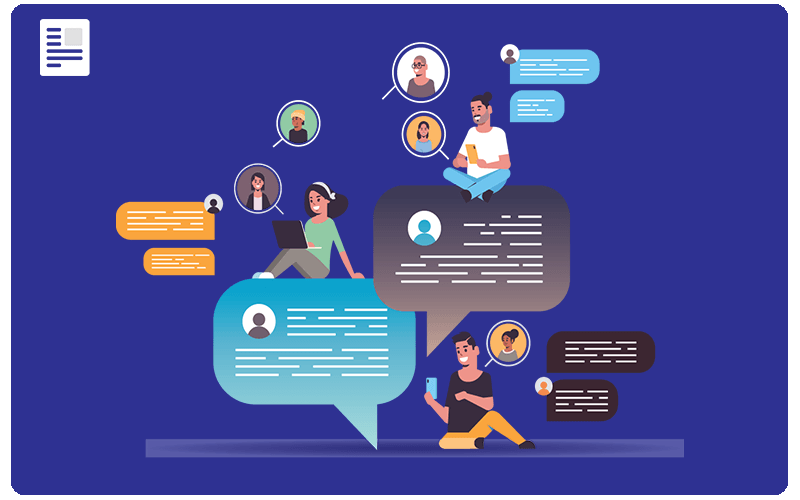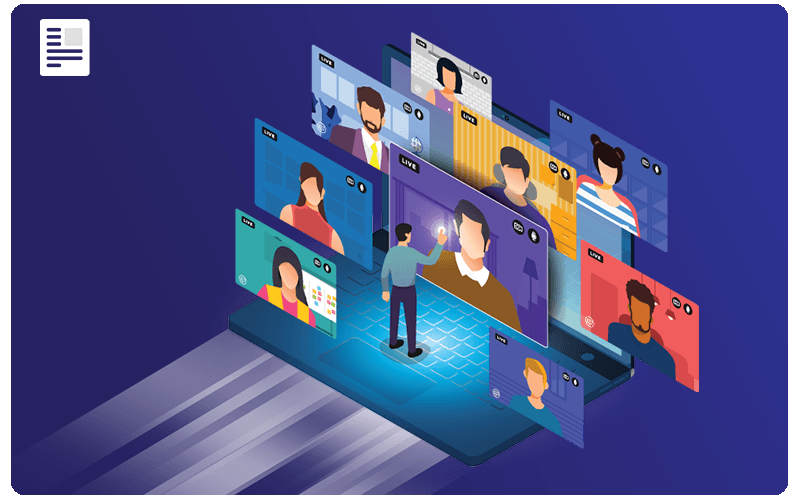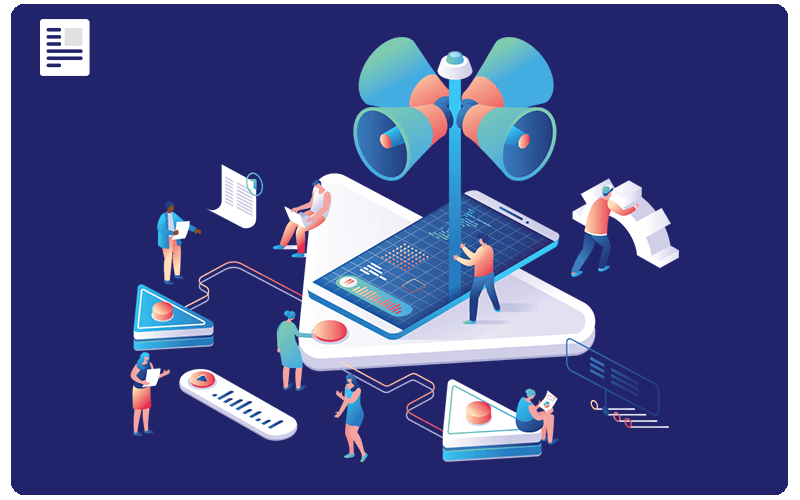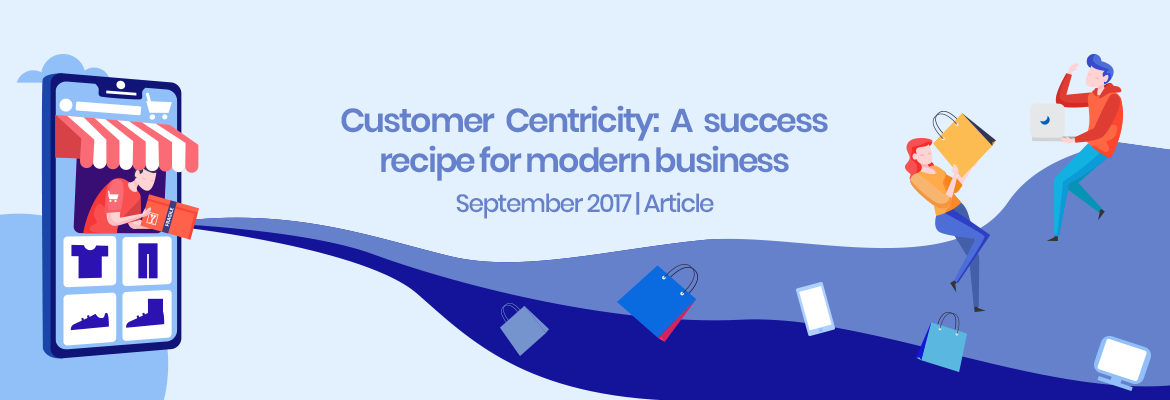
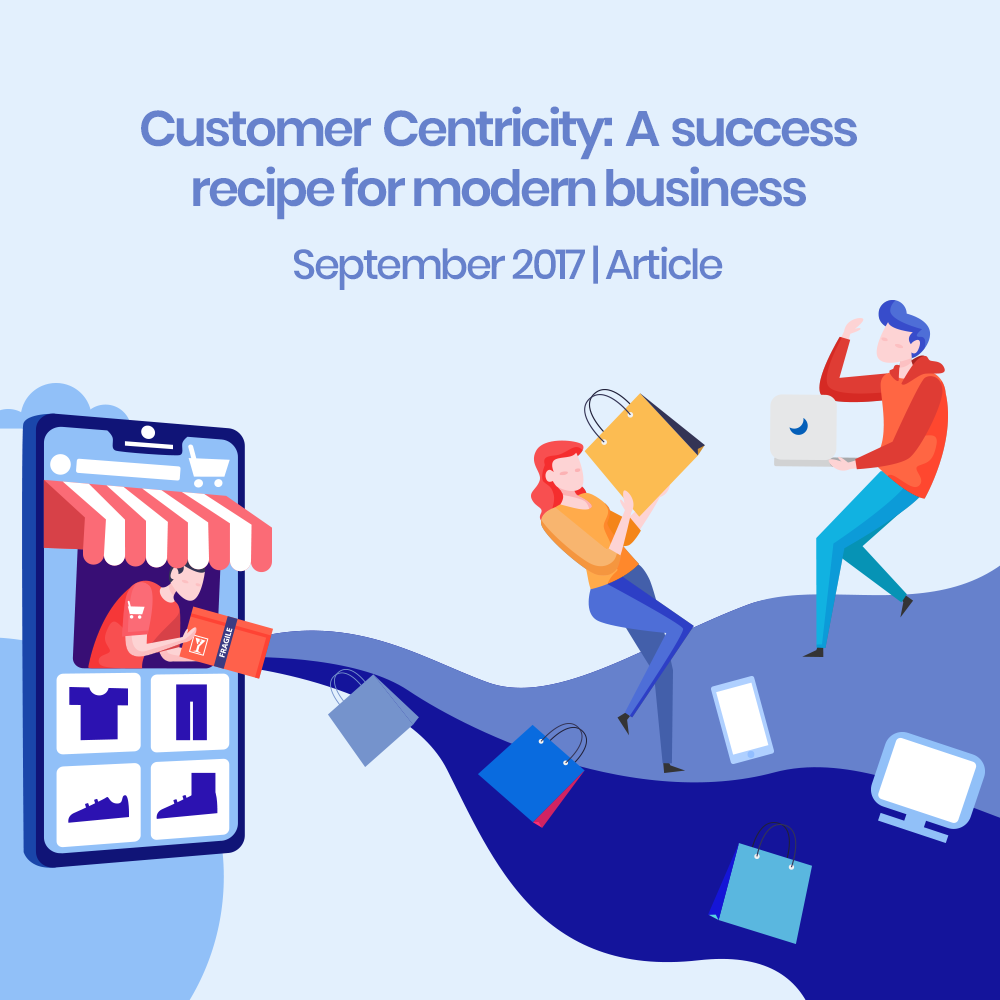
In the aftermath of the second world war, businesses realized that offerings were being created across the board without any knowledge of the consumers’ tastes and interests. To ameliorate this, dedicated marketing research departments started mushrooming up that helped bring about the “golden age of marketing”. The age, that lasted till the early 80s brought widespread economic prosperity (7x growth in the US in 30 post-war years), laid the foundational mindset of knowing the customer, and building trust-based relationships to last a lifetime. Organizations that embedded this mindset in their DNA became the stalwarts of winning through customer experiences. Even Steve Jobs famously suggested that one must start with the customer experience and work their way back to building the technology and look at what Apple achieved over the last few decades. And while such organizations continue to thrive, some former heavyweights (BlackBerry, Sears, Toys” R” Us, etc.) became former because they lost their way, ignored the signs of learning the customer better, and got mired into oblivion.
So, what is customer centricity anyways?
Peter Fader, the author of ‘Customer Centricity’ defines it as a strategy to fundamentally align an organization’s products and services with the wants and needs of its most valuable customers. Sticking to the Apple example, this notion played around every business strategy, process, and tactic to create value for the end-consumer and continually searched for ways to enhance relationships and add stickiness through the anticipation of customer needs, timely collection of feedback, offering class-leading products, and so on.
What fueled the adoption of this concept further?
- The economic crises of the last half-century: From the energy crisis of the 70s, the recession of the early ‘80s, the dotcom bubble of the ’90s, and the global recession of the 2000s caused organizations to become both risk-averse and started implementing cost-cutting measures en masse. Post-2008 recession, in particular, the US ad expenditure shrunk by 13% which prompted the search for affordable avenues of business growth. These avenues were found in the existing customer base as they were much cheaper to maintain and profit from and hence cultivating close relations with them became a top priority.
- A new focus on loyalty marketing: The American Airlines’ AAdvantage frequent flyer program popularized loyalty marketing in the ’80s and ‘90s, the aim of which was to promote long-term, incentive-based relationships with the customer. The success of these programs proved the value by further cementing (and gamifying) relationships and skyrocketed the notion of customer retention as a viable strategy built on loyalty and satisfaction. Such programs are now a lot more sophisticated and almost every industry in every geography has its version of it out there. Mobile payments and payment cards alone have 94% of Chinese, 80% of Americans, and 72% of British people as part of at least one financial services loyalty program.
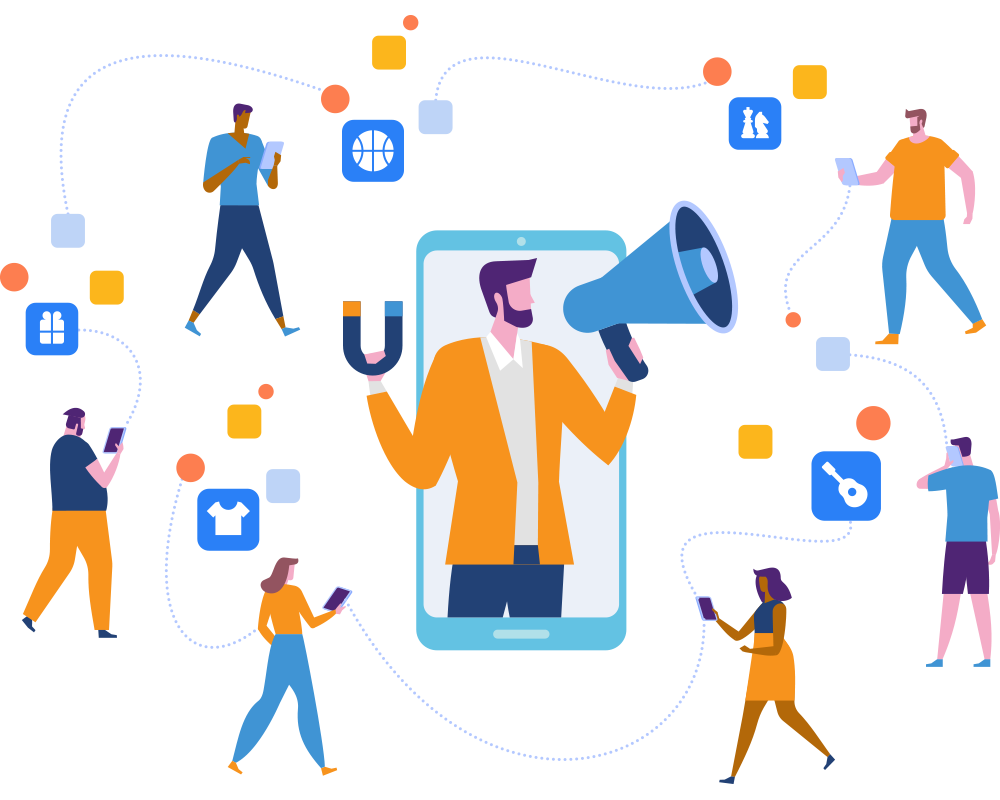
- The arrival of the internet and enhanced customer tools: The Internet fundamentally changed the modern business landscape. Web presence, Search Engine Optimization (SEO), targeted email marketing, online forums, social media, user reviews, and (digital) word-of-mouth have all lowered the barriers of entry for small/medium-sized innovative firms to market and compete against the larger outfits. It has made consumers more informed, with 93% of US consumers now consulting online reviews before making a purchase (Podium). Other tools that were once the darlings of the mainframe and client-server world are now popularized by the cloud. CRM, CX, and Customer Communication tools are targeting prospects better and keeping the existing ones informed about where they sit on their respective journeys and it’s all conveniently available on their mobile devices.
- The emergence of AI: AI, a newer phenomenon in the business world has grown remarkably in the customer space within the last decade. From intelligent lead scoring and generating automatic account insights, to preparing personalized marketing content, to automating customer service operations through chatbots to the positioning of the next best product to an existing customer, AI is set out to deliver value at every step of the customer journey. It comes as no surprise that the top-performing marketers are now more than twice as likely (28% vs. 12%) to use AI in their day-to-day tasks as before (Adobe) and their sales and service collogues are too in their respective areas. The discipline is still in its infancy and is not slowing down anytime soon.
How does it add business value?
- Enhances growth and profitability: The leading modern-day customer-focused businesses are constantly on the lookout to improve the way the customers engage with their brand. From understanding individual preferences to offering personalized solutions, they tend to be 4 times more profitable than those that are not (Forrester). They do this by enriching customer relationships (as a priority) and invest in the right customer processes and technologies (CRM alone has an ROI of $8.71 per dollar spent according to Nucleus Research) and are not afraid of experimenting with product features that could potentially add value to a customer’s experience and satisfaction. Such a focus has a direct effect on the top and bottom line if the business.
- Protects against competition and disruption: Technologically advanced outfits of today are leveraging data and insights to power through the rules of business both within and outside their industry. Netflix is a prime example as it started as an online store for DVD rentals and ended up disrupting Blockbuster en-route to taking over a major share of the movie watching pie. Similarly, in the financial industry, the likes of Apple, Facebook, and others are venturing into the payments arena and every other disruption in every other industry is on the rise. In times like these, customers stick to a brand that demonstrates the ability and willingness to fight for them and keep the lights on against all odds.
- Builds customer loyalties: A Northridge report found that 72% of American consumers end their relationship after one bad experience. Businesses gunning for loyalty against these odds must get creative with their customer approaches and offer unique experiences that separate them from the herds. Starbucks frictionless payments and pre-payments offerings through its app not only further popularized digital retail payments but the offering made it the second most used payments app in the country. Nike turned consumers into brand evangelists with its focus on values that are close to people’s hearts. Its bold and critically acclaimed “Black Lives Matter” campaign featuring NFL star Colin Kaepernick not only increased stickiness, but Nike also saw a 5% jump in sales as a result of this approach.
Then why aren’t more businesses truly customer-centric?
- They don’t have the right mindset: Building a successful customer-centric enterprise needs not only an understanding of the changing landscape of the customer but the right mindset and attitude to go about its success. From understanding the nuances of complex relationship-building measures with multi-generational customers (be it Generation X, Z, or the upcoming “Alpha”, the traits of which have been discussed in our previous Born into AI article) to delineating between the right use of the right digital tools to succeed requires a certain mindset. A mindset prone to risk and open to failure that most executives either do not possess or have already given up on this late in their careers. Product-centric businesses, as a result, continue to operate in this loop and fail to reimagine and operationalize the need to revisit key aspects of this strategy, and many end up losing business and market share to their competitors or out of industry actors (like mentioned before). Even Bloomberg suggests that two-thirds of global investors feel a lack of confidence in the current leadership of most businesses, citing lack of quick decision-making, motivational traits, understanding the evolved nature of the customers, and trust-building with employees as their biggest shortcomings.
- They lack acumen and operational expertise: Even if their heart and mind are in the right place, they do not have the experience or expertise in running a customer-centric shop. For starters, they need to realize that customer success today is a factor of combing customer stickiness/retention with attraction/acquisition, and a traditional spray and pray tact of plastering product-centric ways on customer-centric needs will not get them close to understanding customer lifetime value, customer equity and more. They must learn to reimagine all aspects of the vision and execution of this model and develop operational expertise in running these through the right tools for success.
- They do not have the right technologies, data, and infrastructure: One cannot achieve customer-centricity without understanding what it means from a technology perspective. Winning this customer battle demands traditional organizations to make the right technological and customer-focused investments like their digital native counterparts. CRM, CX, online monitoring and social media tools are just a few of many types that are needed to map and augment the value of the entire customer journey. A deeper look into the technology infrastructure, the open-ness to cloud-enabled technological innovations that allow elasticity and need-based growth, a solid data strategy that lays the foundation for the right analytics and reporting, collaborative system-as-a-service platforms from the likes of Google and Microsoft, and unified communications offerings from the likes of Vonage and Cisco are just a few types of systems that act as pillars for a customer-centric enterprise.
Achieve customer-centricity; the TransformX way
TransformX helps clients achieve customer centricity through its Customer Engagement Offering and sub-offerings built on the TransformX Customer Success Model. The process begins with a Customer State Analysis that takes clients through a series of targeted activities to identify gaps in the current customer approach and creates bespoke roadmaps (process, technology, skill alignment, other) that aid in crafting strategies and success metrics for short, medium & long-term customer initiatives. Next, the TransformX Digital Customer Experience offering assesses the client’s capability across mobile, web, social and other channels and ideal solutions are recommended through our network of global partners. Customer Centricity is also achieved through TransformX CRM Readiness & Acquisition efforts that assists in acquiring the right CRM solution, determining the value and growth capabilities of an existing one or building a strategy for a replacement one through a deep analysis of the client’s business and IT capabilities. TransformX clients have leveraged these offerings over the years to add value to their customer relationships, reduced costs of acquisition, increased customer satisfaction scores (CSAT, NPS etc.), increased customer retention and grown customer lifetime value across the board. We welcome you to visit the Success Page on our website for further details and we look forward to assisting you and your teams in the success of your next Customer initiative.
In the aftermath of the second world war, businesses realized that offerings were being created across the board without any knowledge of the consumers’ tastes and interests. To ameliorate this, dedicated marketing research departments started mushrooming up that helped bring about the “golden age of marketing”. The age, that lasted till the early 80s brought widespread economic prosperity (7x growth in the US in 30 post-war years), laid the foundational mindset of knowing the customer, and building trust-based relationships to last a lifetime. Organizations that embedded this mindset in their DNA became the stalwarts of winning through customer experiences. Even Steve Jobs famously suggested that one must start with the customer experience and work their way back to building the technology and look at what Apple achieved over the last few decades. And while such organizations continue to thrive, some former heavyweights (BlackBerry, Sears, Toys” R” Us, etc.) became former because they lost their way, ignored the signs of learning the customer better, and got mired into oblivion.
So, what is customer centricity anyways?
Peter Fader, the author of ‘Customer Centricity’ defines it as a strategy to fundamentally align an organization’s products and services with the wants and needs of its most valuable customers. Sticking to the Apple example, this notion played around every business strategy, process, and tactic to create value for the end-consumer and continually searched for ways to enhance relationships and add stickiness through the anticipation of customer needs, timely collection of feedback, offering class-leading products, and so on.
What fueled the adoption of this concept further?
- The economic crises of the last half-century: From the energy crisis of the 70s, the recession of the early ‘80s, the dotcom bubble of the ’90s, and the global recession of the 2000s caused organizations to become both risk-averse and started implementing cost-cutting measures en masse. Post-2008 recession, in particular, the US ad expenditure shrunk by 13% which prompted the search for affordable avenues of business growth. These avenues were found in the existing customer base as they were much cheaper to maintain and profit from and hence cultivating close relations with them became a top priority.
- A new focus on loyalty marketing: The American Airlines’ AAdvantage frequent flyer program popularized loyalty marketing in the ’80s and ‘90s, the aim of which was to promote long-term, incentive-based relationships with the customer. The success of these programs proved the value by further cementing (and gamifying) relationships and skyrocketed the notion of customer retention as a viable strategy built on loyalty and satisfaction. Such programs are now a lot more sophisticated and almost every industry in every geography has its version of it out there. Mobile payments and payment cards alone have 94% of Chinese, 80% of Americans, and 72% of British people as part of at least one financial services loyalty program.

- The arrival of the internet and enhanced customer tools: The Internet fundamentally changed the modern business landscape. Web presence, Search Engine Optimization (SEO), targeted email marketing, online forums, social media, user reviews, and (digital) word-of-mouth have all lowered the barriers of entry for small, medium-sized innovative firms to market and compete against the larger outfits. It has made consumers more informed, with 93% of US consumers now consulting online reviews before making a purchase (Podium). Other tools that were once the darlings of the mainframe and client-server world are now popularized by the cloud. CRM, CX, and Customer Communication tools are targeting prospects better and keeping the existing ones informed about where they sit on their respective journeys and it’s all conveniently available on their mobile devices.
- The emergence of AI: AI, a newer phenomenon in the business world has grown remarkably in the customer space within the last decade. From intelligent lead scoring and generating automatic account insights, to preparing personalized marketing content, to automating customer service operations through chatbots to the positioning of the next best product to an existing customer, AI is set out to deliver value at every step of the customer journey. It comes as no surprise that the top-performing marketers are now more than twice as likely (28% vs. 12%) to use AI in their day-to-day tasks as before (Adobe) and their sales and service collogues are too in their respective areas. The discipline is still in its infancy and is not slowing down anytime soon.
How does it add business value?
- Enhances growth and profitability: The leading modern-day customer-focused businesses are constantly on the lookout to improve the way the customers engage with their brand. From understanding individual preferences to offering personalized solutions, they tend to be 4 times more profitable than those that are not (Forrester). They do this by enriching customer relationships (as a priority) and invest in the right customer processes and technologies (CRM alone has an ROI of $8.71 per dollar spent according to Nucleus Research) and are not afraid of experimenting with product features that could potentially add value to a customer’s experience and satisfaction. Such a focus has a direct effect on the top and bottom line if the business.
- Protects against competition and disruption: Technologically advanced outfits of today are leveraging data and insights to power through the rules of business both within and outside their industry. Netflix is a prime example as it started as an online store for DVD rentals and ended up disrupting Blockbuster en-route to taking over a major share of the movie watching pie. Similarly, in the financial industry, the likes of Apple, Facebook, and others are venturing into the payments arena and every other disruption in every other industry is on the rise. In times like these, customers stick to a brand that demonstrates the ability and willingness to fight for them and keep the lights on against all odds.
- Builds customer loyalties: A Northridge report found that 72% of American consumers end their relationship after one bad experience. Businesses gunning for loyalty against these odds must get creative with their customer approaches and offer unique experiences that separate them from the herds. Starbucks frictionless payments and pre-payments offerings through its app not only further popularized digital retail payments but the offering made it the second most used payments app in the country. Nike turned consumers into brand evangelists with its focus on values that are close to people’s hearts. Its bold and critically acclaimed “Black Lives Matter” campaign featuring NFL star Colin Kaepernick not only increased stickiness, but Nike also saw a 5% jump in sales as a result of this approach.
Then why aren’t more businesses truly customer-centric?
- They don’t have the right mindset: Building a successful customer-centric enterprise needs not only an understanding of the changing landscape of the customer but the right mindset and attitude to go about its success. From understanding the nuances of complex relationship-building measures with multi-generational customers (be it Generation X, Z, or the upcoming “Alpha”, the traits of which have been discussed in our previous Born into AI article) to delineating between the right use of the right digital tools to succeed requires a certain mindset. A mindset prone to risk and open to failure that most executives either do not possess or have already given up on this late in their careers. Product-centric businesses, as a result, continue to operate in this loop and fail to reimagine and operationalize the need to revisit key aspects of this strategy, and many end up losing business and market share to their competitors or out of industry actors (like mentioned before). Even Bloomberg suggests that two-thirds of global investors feel a lack of confidence in the current leadership of most businesses, citing lack of quick decision-making, motivational traits, understanding the evolved nature of the customers, and trust-building with employees as their biggest shortcomings.
- They lack acumen and operational expertise: Even if their heart and mind are in the right place, they do not have the experience or expertise in running a customer-centric shop. For starters, they need to realize that customer success today is a factor of combing customer stickiness/retention with attraction/acquisition, and a traditional spray and pray tact of plastering product-centric ways on customer-centric needs will not get them close to understanding customer lifetime value, customer equity and more. They must learn to reimagine all aspects of the vision and execution of this model and develop operational expertise in running these through the right tools for success.
- They do not have the right technologies, data, and infrastructure: One cannot achieve customer-centricity without understanding what it means from a technology perspective. Winning this customer battle demands traditional organizations to make the right technological and customer-focused investments like their digital native counterparts. CRM, CX, online monitoring and social media tools are just a few of many types that are needed to map and augment the value of the entire customer journey. A deeper look into the technology infrastructure, the open-ness to cloud-enabled technological innovations that allow elasticity and need-based growth, a solid data strategy that lays the foundation for the right analytics and reporting, collaborative system-as-a-service platforms from the likes of Google and Microsoft, and unified communications offerings from the likes of Vonage and Cisco are just a few types of systems that act as pillars for a customer-centric enterprise.
Achieve customer-centricity; the TransformX way
TransformX helps clients achieve customer centricity through its Customer Engagement Offering and sub-offerings built on the TransformX Customer Success Model. The process begins with a Customer State Analysis that takes clients through a series of targeted activities to identify gaps in the current customer approach and creates bespoke roadmaps (process, technology, skill alignment, other) that aid in crafting strategies and success metrics for short, medium & long-term customer initiatives. Next, the TransformX Digital Customer Experience offering assesses the client’s capability across mobile, web, social and other channels and ideal solutions are recommended through our network of global partners. Customer Centricity is also achieved through TransformX CRM Readiness & Acquisition efforts that assists in acquiring the right CRM solution, determining the value and growth capabilities of an existing one or building a strategy for a replacement one through a deep analysis of the client’s business and IT capabilities. TransformX clients have leveraged these offerings over the years to add value to their customer relationships, reduced costs of acquisition, increased customer satisfaction scores (CSAT, NPS etc.), increased customer retention and grown customer lifetime value across the board. We welcome you to visit the Success Page on our website for further details and we look forward to assisting you and your teams in the success of your next Customer initiative.
